1. Introduction
 Asus has many product lines to cover the needs of all kinds of users, From beginners to experienced, from office to enthusiast. The idea of offering a low priced product with good performance is always one that pleases users and of course us, the reviewers. The Asus P5N-E SLI is the answer for those who are looking for a low priced motherboard with a compliment of features and performance. But how well does the P5N-E SLI compare with higher priced motherboards, like the Asus P5K Deluxe, P5B Premium and EVGA 680i LT?
Asus has many product lines to cover the needs of all kinds of users, From beginners to experienced, from office to enthusiast. The idea of offering a low priced product with good performance is always one that pleases users and of course us, the reviewers. The Asus P5N-E SLI is the answer for those who are looking for a low priced motherboard with a compliment of features and performance. But how well does the P5N-E SLI compare with higher priced motherboards, like the Asus P5K Deluxe, P5B Premium and EVGA 680i LT?
- Asus P5N-E SLI
The Asus P5N-E SLI is based on nVidia's 650i chipset, which supports Intel® Quad-Core/CoreTM Extreme/Pentium D /Pentium 4/Celeron CPU processors for Socket (LGA775). It features 1333/1066/800/533MHz (FSB), dual-channel un-buffered DDR2 800/667/533 x 4DIMMs with a maximum of 8GB.

- Main features
The P5N-E SLI motherboard has the best balance in cost performance of any VGA motherboard combination currently sold on the market. Asus has used Nvidia's 650i chipset that supports Nvidia's SLI technology. Below is a table, for comparison between Nvidia's 680i, 680i LT, 650i SLI and 650i Ultra chipsets.
|
NVIDIA nForce 680i SLI |
NVIDIA nForce 680i LT SLI |
NVIDIA nForce 650i SLI |
NVIDIA nForce 650i Ultra |
| Segment |
Extreme Enthusiast SLI |
Extreme Performance SLI |
Performance SLI |
Performance |
| Socket |
Intel Socket 775 |
Intel Socket 775 |
Intel Socket 775 |
Intel Socket 775 |
| CPU |
Core 2 Extreme (dual and quad core)
Core 2 Quad
Core 2 Duo
Celeron D
Pentium 4
Pentium D 9XX
Pentium D 8XX |
Core 2 Extreme (dual and quad core)
Core 2 Quad
Core 2 Duo
Celeron D
Pentium 4
Pentium D 9XX
Pentium D 8XX |
Core 2 Extreme (dual and quad core)
Core 2 Quad
Core 2 Duo
Celeron D
Pentium 4
Pentium D 9XX
Pentium D 8XX |
Core 2 Extreme (dual and quad core)
Core 2 Quad
Core 2 Duo
Celeron D
Pentium 4
Pentium D 9XX
Pentium D 8XX |
| FSB (MHz) |
1333 MHz |
1333 MHz |
1333 MHz |
1333 MHz |
| Extreme FSB Overclocking |
Best |
Good |
Good |
Good |
| NVIDIA SLI™ Technology |
Yes
2 x16 |
Yes
2 x16 |
Yes
2 x8 |
No |
| Third PCIe Graphics Expansion Slot |
Yes |
Yes |
No |
No |
| SLI-Ready Memory (MHz) with EPP |
1200 MHz |
800 MHz |
N/A |
N/A |
| JEDEC DDR2 Memory (MHz) |
800 MHz |
800 MHz |
800 MHz |
800 MHz |
| **NVIDIA LinkBoost™ technology |
No |
No |
No |
No |
| PCI Express |
# Lanes |
46 lanes |
46 lanes |
18 lanes |
18 lanes |
# Links |
9 links |
9 links |
4 links |
3 links |
Configuration |
16, 16, 8, 1, 1, 1, 1, 1, 1 |
16, 16, 8, 1, 1, 1, 1, 1, 1 |
8, 8, 1, 1
or
16, 1, 1 |
16, 1, 1 |
| SATA/PATA drives |
6/2 |
6/2 |
4/4 |
4/4 |
| SATA speed |
3Gb/s |
3Gb/s |
3Gb/s |
3Gb/s |
| RAID |
0,1,0+1,5 |
0,1,0+1,5 |
0,1,0+1,5 |
0,1,0+1,5 |
| NVIDIA MediaShield™ Storage Technology |
Yes |
Yes |
Yes |
Yes |
| Native Gigabit Ethernet Connections |
2 |
2 |
1 |
1 |
| NVIDIA FirstPacket™ technology |
Yes |
Yes |
Yes |
Yes |
| NVIDIA DualNet® technology |
Yes |
Yes |
No |
No |
Teaming |
Yes |
Yes |
No |
No |
TCP/IP Acceleration |
Yes |
Yes |
No |
No |
| NVIDIA nTune™ Utility |
Yes |
Yes |
Yes |
Yes |
| USB ports |
10 |
10 |
8 |
8 |
| PCI Slots |
5 |
5 |
5 |
5 |
| Audio |
HDA (Azalia) |
HDA (Azalia) |
HDA (Azalia) |
HDA (Azalia) |
The most obvious differences between the 680i and 650i is the reduced LAN ports (2 vs. 1), the 8x PCI-E lanes (650i) vs 16x PCI-E lanes (680i), the absence of a third PCI-E expansion slot and fewer SATA and USB ports. So we can say that Nvidia's 650i is a reduced version of the 680i with however, a much lower price tag also.
At a quick glance, the main features are:
-Intel® Quad-Core
-Dual-channel DDR2 800/667/533
-Great performance and overclocking
-ASUS O.C. Profile
-ASUS Fanless Design
-2 IEEE 1394a connector onboard (1 in back + 1 on board)
-5 x SATA 3.0 Gb/s (including 1 x SATA On-the-Go)
-ASUS Q-Connector
 LGA775 Intel® Quad-core Processor Ready LGA775 Intel® Quad-core Processor Ready
This motherboard supports the latest Intel® Quad-core processors in LGA775 package.
It's excellent for multi-tasking, multi-media and enthusiastic gamers with 1066/800 MHz FSB.
Intel® Quad-core is one of the most powerful CPU in the world.
|
 NVIDIA SLI™ Technology NVIDIA SLI™ Technology
NVIDIA SLI™ (Scalable Link Interface) takes advantage of the increased bandwidth of the PCI Express bus architecture and features intelligent hardware and software that allows two GPUs to efficiently work together to deliver earth-shattering, scalable performance. For some applications nearly 2X performance! (From www.NVIDIA.com)
NVIDIA® nForce® 650i SLI™
The NVIDIA® nForce® 650i SLI™ chipset supports the NVIDIA® Scalable Link Interface (SLI™) technology that allows two graphics processing units (GPUs) in a single system. It is a highly integrated, high-performance, cost-effective processor.
|
 Dual-Channel DDR2 800 Dual-Channel DDR2 800
DDR2 is the next generation memory technology to replace the current DDR. With the highest speed up to 800MHz,DDR2 memory provides great performance for 3D graphics and other memory demanding applications.
|
Gigabit LAN
The integrated dual Gigabit LAN design allows a PC to serve as a network gateway for managing.
|
IEEE 1394a interface
IEEE 1394a interface provides high speed digital interface for audio/video appliances such as digital television, digital video camcorders, storage peripherals & other PC portable devices.
|
SATA on the Go
The motherboard supports the next-generation hard drives based on the Serial ATA (SATA) 3Gb/s storage specification, delivering enhanced scalability and doubling the bus bandwidth for high-speed data retrieval and saves. The external SATA port located at the back I/O provides smart setup and hot-plug functions. Easily backup photos, videos and other entertainment contents on external devices.
|
 Q-Connector Q-Connector
* Make connection quick and accurate!
The ASUS Q-Connector allows you to connect or disconnect chassis front panel cables in one easy step with one complete module. This unique adapter eliminates the trouble of plugging in one cable at a time, making connection quick and accurate.
|
Fanless Design
Provide a cool environment without all the baggage Cooling fans, though a popular thermal solution, also come with noise and malfunction likelihood. ASUS Motherboard's fanless concept is specifically created to provide a cool environment without all the baggage. ASUS has devoted special efforts to address the thermal issues across the motherboard, and most notably the areas that reside the CPU, power, VGA, Northbridge and Southbridge. The heat sinks and strategic board layout were tailor made to dissipate heat in the most efficient manner.
|
ASUS AI NET2
ASUS AI NET2 remotely detects cable connection the second you turn on the system, and any faulty connections are reported back up to 100 meters at 1 meter accuracy.
|
ASUS O.C. Profile
 The motherboard features the ASUS O.C. Profile that allows users to conveniently store or load multiple BIOS settings. The BIOS settings can be stored in the CMOS or a separate file, giving users freedom to share and distribute their favorite overclocking settings. The motherboard features the ASUS O.C. Profile that allows users to conveniently store or load multiple BIOS settings. The BIOS settings can be stored in the CMOS or a separate file, giving users freedom to share and distribute their favorite overclocking settings.
|
ASUS CrashFree BIOS 3
The ASUS CrashFree BIOS 3 allows users to restore corrupted BIOS data from a USB flash disk containing the BIOS file. This utility saves users the cost and hassle of buying a replacement BIOS chip.
|
 EZ-Flash 2:
Simply update BIOS from a USB flash disk before entering the OS EZ-Flash 2:
Simply update BIOS from a USB flash disk before entering the OS
EZ Flash 2 is a user-friendly BIOS update utility. Simply launch this tool and update BIOS from a USB flash disk before entering the OS. You can update your BIOS only in a few clicks without preparing an additional floppy diskette or using an OS-based flash utility.
|
C.P.R.(CPU Parameter Recall)
 When the system hangs due to overclocking failure, there is no need to open the case to clear CMOS data. Just simply restart the system, the BIOS would show the previous setting and then users can amend the CPU setting again. When the system hangs due to overclocking failure, there is no need to open the case to clear CMOS data. Just simply restart the system, the BIOS would show the previous setting and then users can amend the CPU setting again.
|
- Full specifications
CPU |
LGA775 Socket Intel® Quad-Core/CoreTM Extreme/Pentium D /Pentium 4/Celeron CPU processors
Compatible with Intel® 06/05A/05B processors
Intel® EIST/EM64T/Hyper-Threading Technology/C1E/ TM1/TM2
|
Chipset |
NVIDIA nForce® 650i SLITM |
Front Side Bus |
**1333/1066/800/533MHz
(** available when CPUs are ready for 1333MHz FSB) |
Memory |
Dual channel memory architecture
4 x 240-pin DIMM sockets support up to 8GB DDR2 800/667/533
non-ECC/ Unbuffered memory |
Expansion Slots |
2 x PCI Express x16
- Single VGA mode: x16 (Default)
- SLI mode: x8, x8
1 x PCI Express x1
2 x PCI (PCI 2.2)
|
Storage |
- 2 x Ultra DMA 133/100/66/33
- 4 x Serial ATA 3.0 Gb/s
- Support RAID0, 1, 0+1, 5, and JBOD
- 1 x External Serial ATA 3.0 Gb/s (SATA On-the-Go) |
LAN |
Gigabit LAN featuring AI Net2
Marvell 88E1116 PHY
|
Audio |
Realtek ALC883 6-channel CODEC
Audio Sensing and Enumeration Technology
Multi-Streaming
1 X Coaxial S/PDIF out ports on back I/O
|
IEEE 1394 |
Supports 2 IEEE 1394a connector onboard (1 in back + 1 on board) |
USB |
Supports up 8 USB2.0 ports |
Overclocking Features |
- AI Overclocking (intelligent CPU frequency tuner)
- ASUS CPU Lock Free
- Precision Tweaker:
- vCore: Adjustable CPU voltage at 6.25mv increment
max. 1.6V
- vChip: 4-step Chip voltage control
adjust Chip voltage max. 0.55V
- vDIMM: 8-step DRAM voltage control
adjust DRAM voltage max. 0.6V
- SFS (Stepless Frequency Selection)
- FSB tuning from 200MHz up to 750MHz at 1MHz increment
- PCI Express frequency tuning from 100MHz up to 131MHz at 1MHz increment
- CPU Multiplier
- ASUS C.P.R.(CPU Parameter Recall)
|
Special Features |
ASUS Q-Connector
ASUS O.C. Profile
ASUS Fanless Design
ASUS PC Probe2
ASUS Q-Fan2
ASUS MyLogo2
ASUS Update |
BIOS |
4 Mb Flash ROM, AWARD BIOS, PnP, DMI2.0, WfM2.0, SM BIOS 2.3
ASUS EZ Flash 2,ASUS CrashFree BIOS 2 |
Manageability |
WfM 2.0, DMI 2.0 , WOR by Ring ,
WOL/WOR by PME, WO USB/KB/MS, PXE, RPL & AI Net2 |
Internal I/O Connectors |
1 x 24-pin ATX Power connector
1 x 4-pin ATX 12V Power connector
1 x Chassis Intrusion
1 x CPU + 2 Chassis FAN connectors
1 x Floppy disk drive connector
1 x CD audio in connector
1 x 1394a connector
2 x USB connector supports additional 4 USB ports
1 x Front panel connector (AAFP)
System panel connector
1 x COM Port connector
1 x S/PDIF out connector |
Back Panel I/O Ports |
1 x Parallel port
1 x 1394a connector
1 x S/PDIF Out port (Coaxial)
1 x PS/2 Keyboard port (purple)
1 x PS/2 Mouse port (green)
1 x LAN(RJ-45) port
4 x USB 2.0/1.1 port
1 x External SATA
6-Channel Audio I/O port |
Accessories |
1 x SLI bridge
1 x 2-in-1 ASUS Q-Connector Kit (Retail version only)
1 x UltraDMA 133/100/66 cable
1 x FDDe cable
2 x SATA cables
2 x SATA power cable
1 x 2-port USB2.0 module
1 x I/O Shield
User's manual |
O/S Compatibility |
Windows Vista/XP |
Support CD |
Drivers
ASUS Update
Anti-virus software (OEM version)
ASUS PC Probe II
NVIDIA RIS (Remote Installation Service) application |
Form Factor |
ATX Form Factor, 12”x 9”(30.5cm x 22.9cm) |
2. The Package
The Asus P5N-E SLI costs between €145~195, as found at several online stores. The retail package is small:


All included cables are shown below:

The manuals and included CDs

Below is a list of what's in the retail package
- 1 x SLI bridge
- 1 x 2-in-1 ASUS Q-Connector Kit (Retail version only)
- 1 x UltraDMA 133/100/66 cable
- 1 x FDDe cable
- 2 x SATA cables
- 2 x SATA power cables
- 1 x 2-port USB2.0 module
- 1 x I/O Shield
- User's manual and driver CD-ROM
The board itself is compact but neat and all parts can be identified easily:


Let's zoom in on the CPU area.

A large aluminium heatsink handles the northbridge chipset. There is plenty of free space around the CPU area and any nearby components are low profile. However, the big aluminium heatsink maybe a "problem" for 3rd party CPU coolers like the AC Freezer 7 CPU. Before purchasing such a cooler, check the compatibility list! The motherboard has four memory banks:
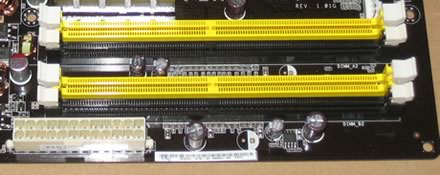
Moving to the south area on the board, we can see the 4x SATA 2 connectors and the absence of any cooling system for the southbridge chipset. It is strange that Asus has opted not to use any kind of cooling system for the chipset, possibly to try and keep the overall cost down.

The SouthBridge needs a proper cooling system however, if you are interested in doing any overclocking.

The motherboard supports SLI Technology but in reduced mode 8x. There is enough space between the two PCI-E slots, so no problem here for extra big VGA cards:

The SLI connector needs to be installed depending on the mode (one VGA card or two).

There are several extra connections for USB, Front Panel Audio, COM2 and Firewire on the back. Asus has include all port modules in the retail package. The back I/O panel has the usual connections:
- 1 x Parallel port
- 1 x 1394a connector
- 1 x S/PDIF Out port (Coaxial)
- 1 x PS/2 Keyboard port (purple)
- 1 x PS/2 Mouse port (green)
- 1 x LAN(RJ-45) port
- 4 x USB 2.0/1.1 port
- 1 x External SATA
- 6-Channel Audio I/O port


3. Installation
Using Everest Ultimate Edition 2007 we can get more information about the board:

Both North Bridge and South Bridge chipsets unveiled:


The latest available Bios was installed for all tests (0604).

Let's now see how our CPU was identified under CPU-Z:


Unfortunately, the motherboard wasn't able to set the memory at 1067, since the system halted on each occasion. However, at 1000 memory setting, the system was stable, with CL5.

For comparison, we post test results from three other motherboards:
- Asus P5B Premium with memory running at 534@5-5-5-15 (Intel P965)
- EVGA 680i LT with memory running at 534@5-5-5-15 (nVidia 680i LT)
- Asus P5K Deluxe WiFi with memory running at 534@5-5-5-15 (Intel P35)
- Asus P5N-E SLI with memory running at 500@5-5-5-15 (Nvidia 650i)
4. Everest Ultimate Edition 2006 - SiSoft Sandra
 EVEREST Ultimate Edition is an industry leading system diagnostics and benchmarking solution for enthusiasts PC users, based on the award-winning EVEREST Technology. During system optimizations and tweaking it provides essential system and overclock information, advanced hardware monitoring and diagnostics capabilities to check the effects of the applied settings. CPU, FPU and memory benchmarks are available to measure the actual system performance and compare it to previous states or other systems. Furthermore, complete software, operating system and security information makes EVEREST Ultimate Edition a comprehensive system diagnostics tool that offers a total of 100 pages of information about your PC. The software has several tests for memory and CPU/FPU built-in.
EVEREST Ultimate Edition is an industry leading system diagnostics and benchmarking solution for enthusiasts PC users, based on the award-winning EVEREST Technology. During system optimizations and tweaking it provides essential system and overclock information, advanced hardware monitoring and diagnostics capabilities to check the effects of the applied settings. CPU, FPU and memory benchmarks are available to measure the actual system performance and compare it to previous states or other systems. Furthermore, complete software, operating system and security information makes EVEREST Ultimate Edition a comprehensive system diagnostics tool that offers a total of 100 pages of information about your PC. The software has several tests for memory and CPU/FPU built-in.

the Asus P5NE-SLI performed very well in the memory tests, surpassing even the EVGA 680i LT.

In the CPU tests, there is very little between the the EVGA 680i LT (nVidia 680i LT) and the P5N E-SLI (Nvidia 650i).
 SiSoftware Sandra (the System ANalyser, Diagnostic and Reporting Assistant) is an information & diagnostic utility. It should provide most of the information (including undocumented) you need to know about your hardware, software and other devices whether hardware or software. It works along the lines of other Windows utilities, however it tries to go beyond them and show you more of what's really going on. Giving the user the ability to draw comparisons at both a high and low-level. You can get information about the CPU, chipset, video adapter, ports, printers, sound card, memory, network, Windows internals, AGP, PCI, PCIe, ODBC Connections, USB2, 1394/Firewire, etc. Sisoft Sandra offers a variety of tests for Memory and CPU.
SiSoftware Sandra (the System ANalyser, Diagnostic and Reporting Assistant) is an information & diagnostic utility. It should provide most of the information (including undocumented) you need to know about your hardware, software and other devices whether hardware or software. It works along the lines of other Windows utilities, however it tries to go beyond them and show you more of what's really going on. Giving the user the ability to draw comparisons at both a high and low-level. You can get information about the CPU, chipset, video adapter, ports, printers, sound card, memory, network, Windows internals, AGP, PCI, PCIe, ODBC Connections, USB2, 1394/Firewire, etc. Sisoft Sandra offers a variety of tests for Memory and CPU.

In Sisoft Sandra 2007 SP1, there is very little between the nVidia 680i LT and the nVidia 650i based motherboards in the memory benchmarks. The same is also true for the CPU benchmarks shown below.

The USB performance of all four motherboards was measured under Sisoft Sandra with a Corsair Voyager 8GB GT USB stick. The "Removable Storage" benchmark was used to get the "Performance Index" (reading/writing operations per minute).

Unfortunately, the Asus P5N-E SLI exhibited extremely poor USB performance. We tried the same test several times and got similar readings. The BIOS settings were set for USB2.0 (max) performance, so we don't know why the P5N-E SLI had such slow performance, maybe it is a BIOS or driver bug?
5. PC MARK 05 - 3D MARK 06
 PCMark®05 is everything you need to reliably and easily measure the performance of your PC and determine its strengths and weaknesses. With PCMark05, you will be able to select the optimal upgrades for your existing PC, or choose the right new PC that fits your specific needs. This easy-to-use product gives you the same tools and knowledge that virtually every professional tester in the industry uses. Below you can see the results for memory and CPU.
PCMark®05 is everything you need to reliably and easily measure the performance of your PC and determine its strengths and weaknesses. With PCMark05, you will be able to select the optimal upgrades for your existing PC, or choose the right new PC that fits your specific needs. This easy-to-use product gives you the same tools and knowledge that virtually every professional tester in the industry uses. Below you can see the results for memory and CPU.
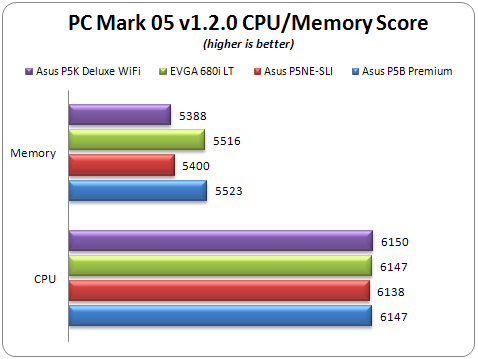
In both benchmarks, the EVGA 680i LT was faster than the Asus P5N-E SLI.
 3DMark®06 is the worldwide standard in advanced 3D game performance benchmarking. A fundamental tool for every company in the PC industry as well as PC users and gamers, 3DMark06 uses advanced real-time 3D game workloads to measure PC performance using a suite of DirectX 9 3D graphics tests, CPU tests, and 3D feature tests. 3DMark06 tests include all new HDR/SM3.0 graphics tests, SM2.0 graphics tests, AI and physics driven single and multiple cores or processor CPU tests and a collection of comprehensive feature tests to reliably measure next generation gaming performance today.
3DMark®06 is the worldwide standard in advanced 3D game performance benchmarking. A fundamental tool for every company in the PC industry as well as PC users and gamers, 3DMark06 uses advanced real-time 3D game workloads to measure PC performance using a suite of DirectX 9 3D graphics tests, CPU tests, and 3D feature tests. 3DMark06 tests include all new HDR/SM3.0 graphics tests, SM2.0 graphics tests, AI and physics driven single and multiple cores or processor CPU tests and a collection of comprehensive feature tests to reliably measure next generation gaming performance today.

3D Mar06 tests both CPU and RAM, as well as VGA performance. The EVGA 680i LT was awarded the highest score at 2113 marks, while the P5N-E SLI the lowest at 2060.
6. Science Mark 2.0 - Pov-Ray - Nero Digital
 Science Mark 2.0 is an attempt to put the truth behind benchmarking. In an attempt to model real world demands and performance, SM2 is a suite of high-performance benchmarks that realistically stress system performance without architectural bias. Science Mark 2.0 is comprised of 7 benchmarks, each of which measures a different aspect of real world system performance.
Science Mark 2.0 is an attempt to put the truth behind benchmarking. In an attempt to model real world demands and performance, SM2 is a suite of high-performance benchmarks that realistically stress system performance without architectural bias. Science Mark 2.0 is comprised of 7 benchmarks, each of which measures a different aspect of real world system performance.
Pov-Ray s a high-quality, totally free tool for creating stunning three-dimensional graphics. It is available in official versions for Windows, Mac OS/Mac OS X and i86 Linux. The source code is available for those wanting to do their own ports. We used Pov-Ray 3.7beta15 for all tests, since it supports Dual Core CPUs. We used the built-in benchmark as suggested by the developers.

In ScienceMark and Pov-Ray, the EVGA 680i LT (Nvidia 680i LT) was slightly faster than the Asus P5N-E SLI (Nvidia 650i), but the difference is not significant.
- Nero Digital
Nero Digital is one of the best known Digital formats, offering both ASP and AVC encoder profiles.

_Profiles.png)
For our tests, we used the latest version of Nero Recode v2.3.1.8 as packaged with Nero Reloaded v7.5.0.1. As a source, we used a VOB file of 5 mins duration. We encoded for each processor in two modes (ASP, AVC) with exactly the same preferences (Same bitrate and Dual pass). The encoding time displayed below is what Nero Recode reported. The lower the time, the better. All results are displayed in seconds.
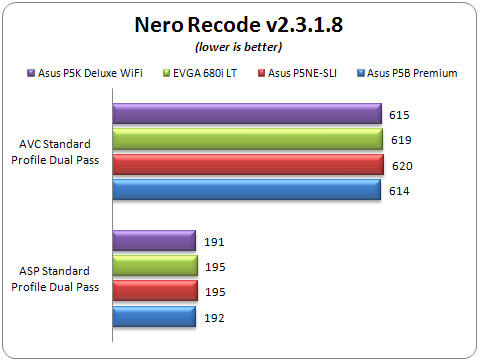
All tested motherboards has similar performance with Nero Recode. Both nVidia based motherboards (EVGA 680i LT and Asus P5N-E SLI) had the highest encoding times.
7. Cinebench - Super Pi
 CINEBENCH is the free benchmarking tool for Windows and Mac OS based on the powerful 3D software CINEMA 4D. Consequently, the results of tests conducted using CINEBENCH 9.5 carry significant weight when analyzing a computer’s performance in everyday use.
CINEBENCH is the free benchmarking tool for Windows and Mac OS based on the powerful 3D software CINEMA 4D. Consequently, the results of tests conducted using CINEBENCH 9.5 carry significant weight when analyzing a computer’s performance in everyday use.
Especially a system’s CPU and the OpenGL capabilities of its graphics card are put through their paces (even multiprocessor systems with up to 16 dedicated CPUs or processor cores). During the testing procedure, all relevant data is ascertained with which the performance of different computers can subsequently be compared, regardless of operating system. All tests were done with the latest available build (R9.5), and the sum of all the subtests is displayed in the following chart, except for OpenGL Software & Hardware Lighting tests, since both depend on the installed VGA card.

In CineBench, the Asus P5N-E SLI had the lowest performance with a performance index of 1594.
SuperPI has become an utility to benchmark modern systems. In August 1995, the calculation of pi up to 4,294,960,000 decimal digits was succeeded by using a supercomputer at the University of Tokyo. The program was written by D.Takahashi and he collaborated with Dr. Y.Kanada at the computer center, the University of Tokyo. This record-breaking program was ported to personal computer environments such as Windows NT and Windows 95, and called Super PI.

The software offers up to 32M calculations of PI numbers. For all motherboards, we tested up to 8M calculations and summed them for a total score.

The Asus P5N-E SLI was slightly faster than the EVGA 680i LT due to the slightly "faster" memory running speed. The two Nvidia based motherboards had the highest SuperPI calculation times...
8. Overclocking
As we all known, Asus motherboards are usually good overclockers and Nvidia based motherboards offer enough BIOS options to perform overclocking. So let's see how well this motherboard can overclock. At first we kept the CPU multiplier locked at 9x and we pushed the FSB to see how high we could go. Our best efforts were "stuck" at 340MHz FSB. Not bad considering that the Southbridge chipset has no cooling system installed.
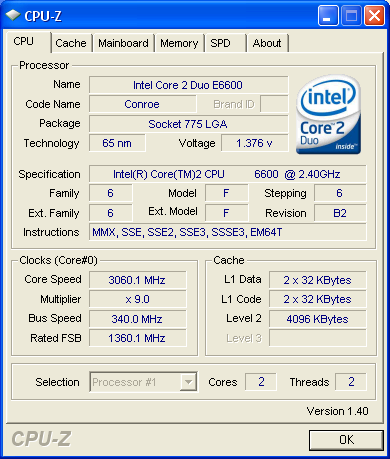
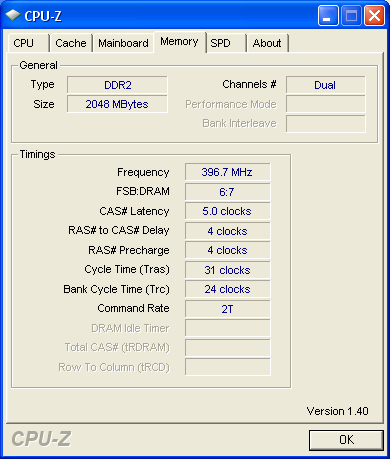
Next step was to find how high an FSB we could get with the Asus P5N-E SLI. Without making any changes and leaving all voltages at auto mode, we managed to get a 100% stable system at 450FSB and memory running 1:1.
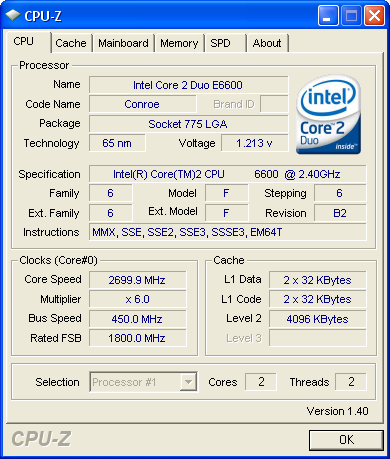
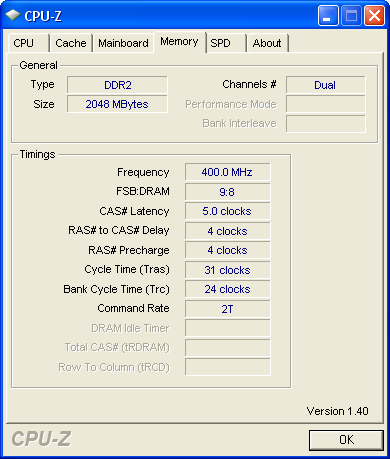
We can say that for a €99 product, the performance was very good. Of course, this is not the highest FSB you can get, but nevertheless good enough for good overclocking. The EVGA 680i LT offers more overclocking capabilities, but also costs a lot more...
9. Conclusion
 Apart from the high priced motherboards for enthusiasts, ASUS also offer very affordable solutions for entry level users. The Asus P5N-E SLI is one of those solutions and comes at a retail price of around €150, making it very appealing indeed. This board is based on nVidia's 650i chipset and while it was slightly slower overall compared with the nVidia's 680i LT based motherboard, we were quite happy with its performance. It costs much less and the performance differences with the higher priced EVGA 680i LT will not be noticed by entry level users.
Apart from the high priced motherboards for enthusiasts, ASUS also offer very affordable solutions for entry level users. The Asus P5N-E SLI is one of those solutions and comes at a retail price of around €150, making it very appealing indeed. This board is based on nVidia's 650i chipset and while it was slightly slower overall compared with the nVidia's 680i LT based motherboard, we were quite happy with its performance. It costs much less and the performance differences with the higher priced EVGA 680i LT will not be noticed by entry level users.

The board design is quite good, however, the big NorthBridge aluminium heatsink could pose a problem with the larger 3rd party CPU coolers and the SouthBridge chipset doesn't have any kind of cooling.
There are four SATA II connectors for HDD and optical storage devices, along with ATA133 and floppy connectors. While the motherboard may support Nvidia's SLI technology, there is a catch. When two identical VGA cards are installed, the VGA lanes are working at x8 and not at x16, as happens with the Nvidia 680i chipsets. That will produce reduced performance and you have to manually set the corresponding SLI bridge motherboard connector.
Passing to the overclocking area, the board proved to be easily overclockable. The BIOS options are fewer than with Nvidia 680i based products, but even with Auto settings, overclocking is possible and with good results. With an Intel E6600 processor, we got a maximum of 450FSB. Perhaps with better cooling system for north/southbridge, performance could be improved.
Is there anything else? Well yes. The BIOS needs some more work to properly support 1067MHz (dual channel) memory operation, while USB2.0 performance was very slow, at least it was when we tested it with the Corsair Voyager GT module. On the bright side, the retail price of €150 is very good.
The Asus P5N-E SLI gives good performance and will keep you company for a long time. There are some drawbacks, that may trouble enthusiast users, but at that price we really couldn't ask for more.
